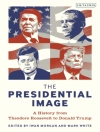The mining of diamonds, their trading mechanisms, their financial institutions, and, not least, their cultural expressions as luxury items have engaged the work of historians, economists, social scientists, and international relations experts. Based on previously unexamined historical documents found in archives in Belgium, England, Israel, the Netherlands, and the United States, this book is the first in English to tell the story of the formation of one of the world’s main strongholds of diamond production and trade in Palestine during the 1930s and 1940s. The history of the diamond-cutting industry, characterized by a long-standing Jewish presence, is discussed as a social history embedded in the international political economy of its times; the genesis of the industry in Palestine is placed on a broad continuum within the geographic and economic dislocations of Dutch, Belgian, and German diamond-cutting centers. In providing a micro-historical and interdisciplinary perspective, the story of the diamond industry in Mandate Palestine proposes a more nuanced picture of the uncritical approach to the strict boundaries of ethnic-based occupational communities. This book unravels the Middle-eastern pattern of state intervention in the empowerment of private capital and recasts this craft culture’s inseparability from international politics during a period of war and transformation of empire.
Inhoudsopgave
List of Figures and Tables
List of Illustrations
Acknowledgments
List of Abbreviations
Map
Introduction
Global and National: War, Diamonds and the Colonial State
Chapter 1. Palestine as an Alternative
Preconditions
Local Initiatives
The Pressure of the War
The Logic of Limited Expansion
Chapter 2. The Making of a Monopoly
Effects of the Occupation
Organizing Capital
Power and Contestation
Chapter 3. Diamond Work and Zionist Time
The Reign of the Small Stone
Gain and Discipline
Facing the ‘Triangular Thread’
Splintering Labor’s Voice
Zionist Legitimacy
Chapter 4. The Challenge and its Constraints
In Antwerp’s Absence
The Politics of Supply
Adamant London
Accountability and Vindication
Chapter 5. Labor Unrest
Actors and Issues
The First General Strike
Labor-Capital
Rapprochement
Propensity to Strike
The Long Showdown
Chapter 6. Liberation and Liberalization
Contrasts at War’s End
Incipient De-Control
Deregulation
Chapter 7. Crisis and Restructuring
Reversal of Fortunes
National Intervention
Labor’s Moment
Chapter 8. Reproducing the Pact
State of Transition
The Pact
Epilogue
Appendices
Table A.1 Explanation of Names of Diamond Factories in 1930-1950 Palestine
Table A.2 Establishment of Diamond Factories in Palestine, 1937-1941
Table A.3 Origins of Main Owners of Diamond Factories in Palestine, November 1941
Table A.4 Diamond Factories (PDMA Membership), Palestine November 1944
Table A.5 Diamond Factories (PDMA Membership), Palestine November 1946
Table A.6 Diamond Cooperatives in Palestine/Israel, 1946-1949
Bibliography
Index
Over de auteur
David De Vries is an Associate Professor at the Department of Labor Studies at Tel Aviv University, Israel. He studied history at the LSE and Warwick University. A social historian, his primary research interests are modern labor and business history of Palestine and Israel. His publications include Idealism and Bureaucracy in 1920s Palestine: The Origins of ‘Red Haifa’ (1999, in Hebrew) and Dock Workers: International Explorations in Labor History, 1790–1970 (2000, co-edited). Currently he is writing on strikes in Israeli history and is involved in a project on new perspectives in the business history of the modern Middle East.












